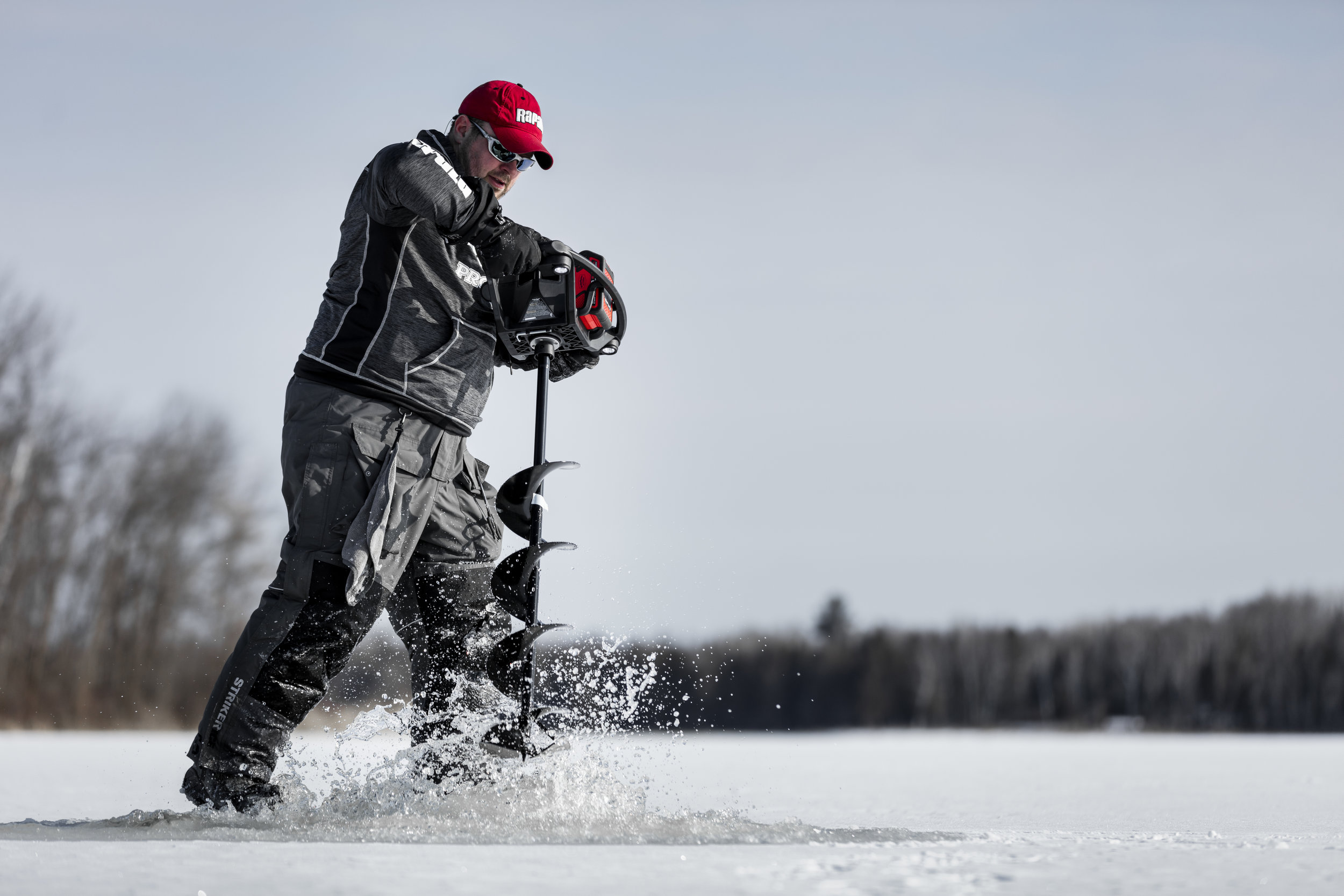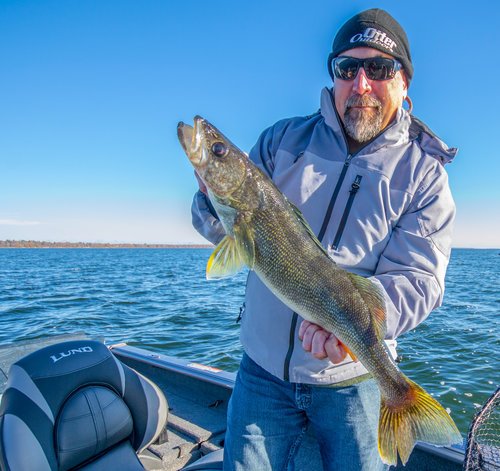Electric ice augers have been the craze of the winter fishing market for the past decade or more, but recent advances in batteries have accelerated that surge. Following national trends in everything from home and garden tools to our vehicles, there are definitely some things to like about electric-powered ice augers. Gas, oil, and everything that goes along with carbureted small engines can be messy and troublesome, but electric is no silver bullet and can come with its own complications. Like any tool, there are scenarios where it shines, and like any discipline, few products can serve all purposes equally well. After running many models of both electric and gas-powered augers, here’s some rationale to what I plan to run and why.
Gas augers have longevity on their side. The engineering concepts have been tested, tried, and re-created to serve about any interest an ice-angler would ever need, and more importantly, the mistakes attributed to poor design have been for the most part weeded-out. De-compression valves make them easier to crank, pre-mixed gas and oil combinations make them easier to fuel, and laser-sharp curved blades make them cut faster by shaving ice rather than pulverizing it like the chipper models of old.
Still, anything with gas can leak, flood, or otherwise create issues when subjected to the conditions we as ice-anglers put our augers through. Not to mention, the burning of said gas, especially in confined areas like a fish-house is alone enough for many people to consider the switch to electric. The upside to gas however, is that it’s a very efficient power source when compared to our current electric offerings, meaning if you’re drilling lots of holes through thick ice, electric batteries may not get you as many holes punched as your gas auger once did. At the end of the day, that may or may not be a deal-breaker for anglers that fish well into the late-ice period when extensions are often needed for the northern portions of the ice-belt. Though it’s a small percentage of ice anglers, for the dedicated hole-hopper who punches more than 100 holes in a sitting through thick ice, stick with gas for the time being.
Lithium battery technology has carried electric augers much futher in recent years, with faster charging and more importantly, longer battery life that simply leads to more holes in thicker ice. For the exclusive hard-house angler who punches a handful of holes in a shelter, then maybe a few tip-up holes outside, about any electric will do and I see few reasons to own a gas auger. That’s a strong statement I never thought I’d utter, but after a few years of electric auger use under my belt, I’ve found the market to be full of great options to serve that need.
Decisions on gas vs. electric are much more difficult for ‘tweeners like myself. For early ice, I’m roaming the shallows and punching lots of holes, which eventually gives way to more portable house fishing and then mid-winter drop-down or permanent shelter fishing. As ice grows thicker and fishing gets tougher, especially on the big walleye and perch factories of the north, success is often predicated on drilling many holes and actively finding fish. Then, the late-ice period hits with fewer holes needed, better fishing found, but thicker ice encountered.
While it would be difficult to select one auger to excel in all of those scenarios, I’ve seen and tested enough to know that the top-end Lithium powered electric augers can serve nearly all of my ice fishing needs. For that reason, I’m throwing in on the electric craze myself and running a 40V version as my primary auger for this ice season. It’s been a long-time coming, yet I’ve been reticent to switch until now because of the sheer number of holes I drill in an average ice outing. I’ll still tote a gas auger on the handful of occasions I’m ice trolling late season up on Mille Lacs, Lake of the Woods, Upper Red Lake, or Winnipeg, but those are relatively rare scenarios to the way most people fish on most lakes.
I’m not talking about cordless drills with adapter kits or the electric versions which utilize a 12V lead-acid battery. These units have their place, but to truly cover all of your bases for an entire season on ice, I’m talking about a dedicated ice auger with an affixed high voltage, high amperage, Lithium power source. The kind that’ll drill 100 holes per charge, be exhaust-free inside or out, and make ice chips fly with the push of a button. These units are as light or lighter than the comparable gas version, and the cutting power doesn’t make you wish you had your old auger back.
If you’ve been torn between the performance of gas and the many benefits of electric, a few new offerings on the electric side of the market may provide you the impetus to switch as well. While I know that the technology will get better and better, allowing me to eventually have all of my cake and eat it too, the benefits of electric have now grown too great to sit it out another year.





